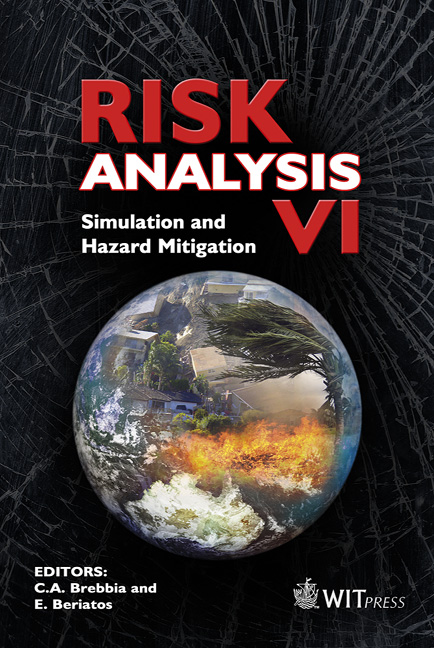A Quantitative Microbial Risk Assessment Of Helminth Ova In Reusing Sludge For Agricultural Production In Developing Countries
Price
Free (open access)
Volume
39
Pages
10
Page Range
65 - 74
Published
2008
Size
477 kb
Paper DOI
10.2495/RISK080071
Copyright
WIT Press
Author(s)
I. Navarro, B. Jiménez, E. Cifuentes & S. Lucario
Abstract
Helminth ovum (HO) is the main biological concern when reusing sludge for agricultural production. Worldwide sludge norms consider a maximum allowable value for this pathogen of 0.25-1 HO/gTS. Such a threshold may be unaffordable to most developing countries, due to: (a) a very high original content of a wide variety of helminth ovum in sludge, and (b) the lack of technology to inactivate up to 2-3 log. This paper presents the actual risk caused by the use in agricultural land of treated sludge at the US-EPA and WHO limits, as well as the achievable content in sludge treated with affordable technology in developing countries, by using a quantitative microbial risk assessment (QMRA). This research developed a dose response curve for the Ascaris lumbricoides infection (Beta-Poisson model), to estimate the risk due to the ingestion of carrots grown in biosolids-amended soil and eaten raw. Using @Risk, risk estimates were constructed. The results indicated that the daily risk of infection was between 9.0 x 10-5 and 5.0 x 10-2. The QMRA proved to be a useful tool to determine that the risk not only is not considerably higher but also can be managed in different ways, other than only by sludge treatment. The pollution of crops by helminths could be controlled by using different sludge application rates, limiting the kind of crops to be grown and introducing efficient produce washing methods. Keywords: agriculture, biosolids, dose response curve, helminth ova, quantitative microbial risk assessment, sludge.
Keywords
agriculture, biosolids, dose response curve, helminth ova,quantitative microbial risk assessment, sludge.





